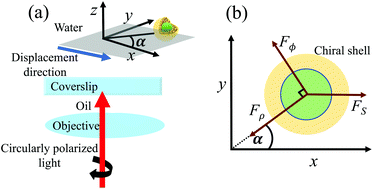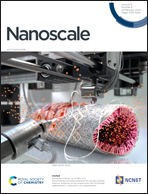Enantioselective manipulation of single chiral nanoparticles using optical tweezers†
Abstract
We put forward an enantioselective method for chiral nanoparticles using optical tweezers. We demonstrate that the optical trapping force in a typical, realistic optical tweezing setup with circularly-polarized trapping beams is sensitive to the chirality of core–shell nanoparticles, allowing for efficient enantioselection. It turns out that the handedness of the trapped particles can be selected by choosing the appropriate circular polarization of the trapping beam. The chirality of each individual trapped nanoparticle can be characterized by measuring the rotation of the equilibrium position under the effect of a transverse Stokes drag force. We show that the chirality of the shell gives rise to an additional twist, leading to a strong enhancement of the optical torque driving the rotation. Both methods are shown to be robust against variations of size and material parameters, demonstrating that they are particularly useful in (but not restricted to) several situations of practical interest in chiral plasmonics, where enantioselection and characterization of single chiral nanoparticles, each and every one with its unique handedness and optical properties, are in order. In particular, our method could be employed to unveil the chiral response arising from disorder in individual plasmonic raspberries, synthesized by close-packing a large number of metallic nanospheres around a dielectric core.



 Please wait while we load your content...
Please wait while we load your content...